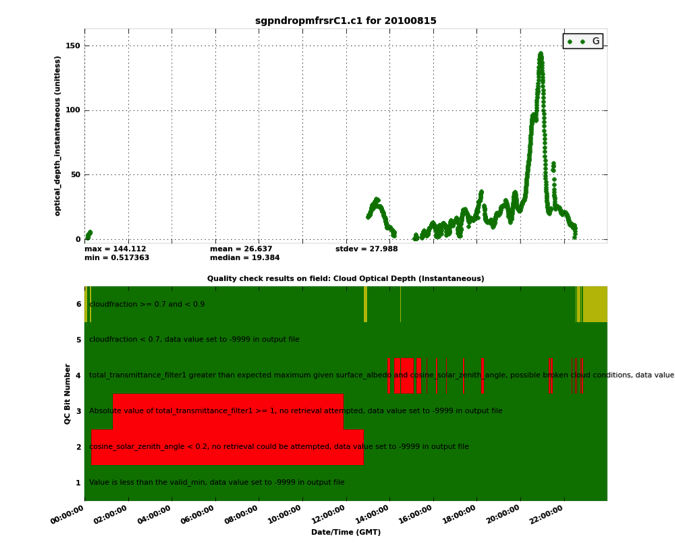NDROP
Droplet number concentration
Baseline VAP
 Cloud droplet number concentration is an important factor in understanding aerosol-cloud interactions. As aerosol concentration increases, it is expected that droplet number concentration (Nd) will increase and droplet size will decrease, for a given liquid water path. This will greatly affect cloud albedo as smaller droplets reflect more shortwave radiation; however, the magnitude and variability of these processes under different environmental conditions is still uncertain. McComiskey et al. (2009) have implemented a method, based on Boers and Mitchell (1994), for calculating Nd from ground-based remote-sensing measurements of optical depth and liquid water path.
Cloud droplet number concentration is an important factor in understanding aerosol-cloud interactions. As aerosol concentration increases, it is expected that droplet number concentration (Nd) will increase and droplet size will decrease, for a given liquid water path. This will greatly affect cloud albedo as smaller droplets reflect more shortwave radiation; however, the magnitude and variability of these processes under different environmental conditions is still uncertain. McComiskey et al. (2009) have implemented a method, based on Boers and Mitchell (1994), for calculating Nd from ground-based remote-sensing measurements of optical depth and liquid water path.
They show that the magnitude of the aerosol-cloud interactions (ACI) varies with a range of factors, including the relative value of the cloud liquid water path (LWP), the aerosol size distribution, and the cloud updraft velocity. Estimates of Nd under a range of cloud types and conditions and at a variety of sites are needed to further quantify the impacts of aerosol-cloud interactions. In order to provide data sets for studying aerosol-cloud interactions, the McComiskey et al. (2009) method was implemented as the Droplet Number Concentration (NDROP) value-added product (VAP).
Primary Derived Measurements
Contact
View all contacts-
Damao ZhangTranslator Pacific Northwest National Laboratory
Related Data Announcements
References
View all references- Mikkelsen et al. "Constraining Aerosol-Cloud Adjustments by Uniting Surface Observations with a Perturbed Parameter Ensemble". 2025. 10.5194/acp-25-4547-2025.
Locations
Keep up with the Atmospheric Observer
Updates on ARM news, events, and opportunities delivered to your inbox
ARM User Profile
ARM welcomes users from all institutions and nations. A free ARM user account is needed to access ARM data.


















